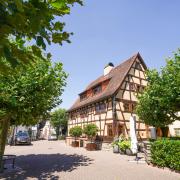Artist Alex Murdin has embarked on a monumental project to draw a thousand stones – all of which make up a world-record breaking ancient monument on Dartmoor. It will take three years to complete, but time is of the essence, as he explains.
One evening, while studying an Ordnance Survey map of Dartmoor, Alex Murdin noticed a stone row marked in the Upper Erme Valley.
It appeared to be a long line of ancient stones and it fascinated him so much, he set out to find it.
The Upper Erme Valley Row was created around 4,000 years ago, and at over 2.25 miles long it is the longest stone row found anywhere in the world.
It’s in a remote location, an 11km walk from Ivybridge, but Alex made the journey and having reached the row and spent time exploring it, he decided to create an artwork.

It’s thought that the row is made up of at least 922 stones, with many more buried alongside, covered by the rising peat.
For his project, One Thousand Stones, Alex is making individual drawings of the stones, each on an A5 piece of paper and in black and white.
Aiming to complete a drawing each day, it will take him three years to complete, but the length of time is an integral part of the work.
The row ‘already has this sense of a timeline’, says Alex. ‘Maybe these stones are about connecting those people to their ancestors – maybe they put one up when someone died?’
No one knows quite how or why the stone row was built but, he says. ‘You do think of those people 4,000 years ago that put them up, but also, they were handling something that had been around for 260 million years. The stone itself is incredibly ancient.’

It’s also about slowing down time. ‘When you take a walk along it you are focused on the stones and that environment and that’s what we miss out on. It’s harder and harder to find space to slow down and notice the changing of the seasons and the way that the days are getting shorter or longer.
‘I wanted to focus on the individuality of the stones in the row to capture something more about this relationship with time.’
Alex works from the photographs he took and has around 200 individual drawings, which are evolving. ‘To start they are quite simple, but now the latest ones are often quite diffuse, quite glowing, cloud-like nebulous objects.’
The stones are all very different. ‘Those above ground have become thriving ecosystems of moss, lichens and insect life and those deep in the peat have become part of underground life,’ he says.

‘All of them continue to erode in the acid ground water, in the wind, the rain and the ice, and will eventually become grains of sand and flecks of pure white china clay, perhaps even one day in the future having another life as a new clay artwork.’
It would be more usual for an artist to portray the whole row in a landscape. ‘But I thought what a wonderfully contemplative or mindful thing it would be to draw each individual stone, almost as if they are little characters, because they do have so much character. When you stop, slow down and start to draw each individual, you see they have such beautiful shapes.’
Alex is documenting his project online, but he eventually hopes to create a book. ‘I love the idea of having a two mile stone row you can put in your pocket and take with you wherever you want to go.’
Having lived in Ashburton for over 20 years he regularly explores Dartmoor. It has been ‘a wonderful, natural space to be in. I’m very lucky to have it on my doorstep.’

As an artist he has studied the relationship between art and the natural world, looking at the way people see their environment and the places they live in.
During his lockdown walks he became focused on Dartmoor’s granite formations and ancient stones.
It may be a record-breaker, but unlike other famous stone circles, the tallest of the Erme stones are only around 1.5 to 2m. Despite this, Alex says the experience of being with them was still ‘spectacular’.
‘But it’s in more of a contemplative kind of way, as this is something you walk alongside. It snakes sinuously across this wonderful grassy terrain and is much more part of and responsive to its landscape.'

The site he says ‘feel like the middle of nowhere; it’s just you and couple of skylarks. You notice the peace and tranquility and it has wonderful views back towards Plymouth Sound, there’s a real connection between sea, land and sky.’
Alex hopes One Thousand Stones might change perceptions. ‘People think of stone as dead and static – we say “stone cold” or “heart of stone”, for example. But when you look at something like the granite on Dartmoor, it actually has a real kind of life to it.’
He wants to encourage people ‘to look at something slowly, over and over again, and find wonder and interest in that thing.’
‘It’s really important to be mindful about things and to appreciate them for the small variations in their beauty. If I can share just a little bit of that I think that would be a very positive thing to give.’
‘And if we think in longer timescales maybe we can make more long term decisions, and take a bit more care of our planet.
‘If we could think like a tor then maybe the world would be a better place!’
Follow progress of One Thousand Stones at lithicality.space



























